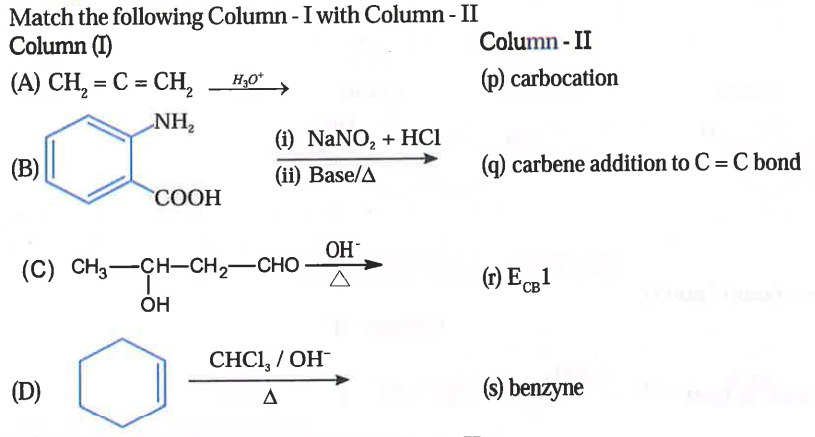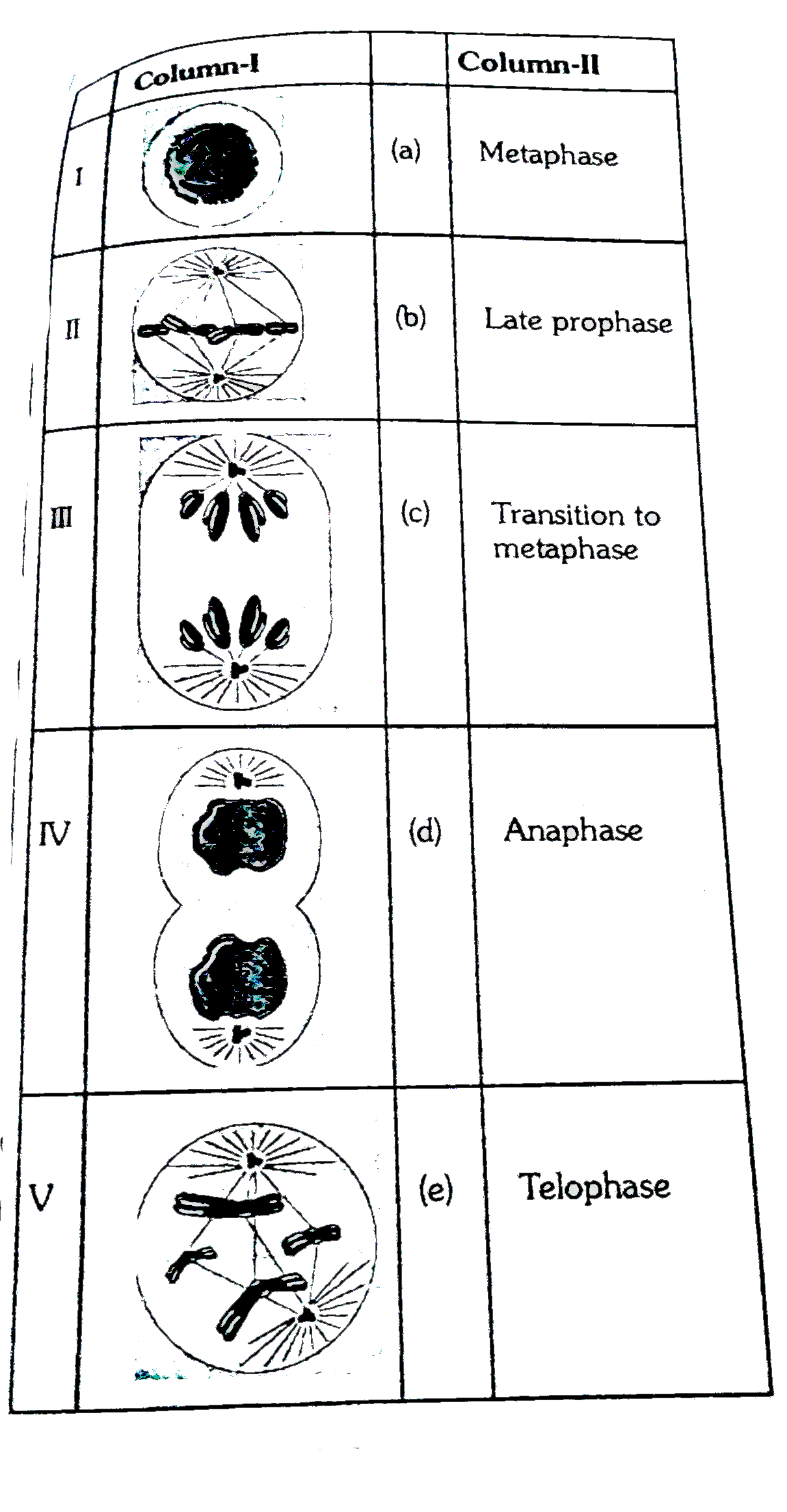Match the following columns
Column-IColumn-IIAHygrophytes1problems of water lossBmesophytes2excess water in guttationCxerophytes3luxuriant vegeratative growth
ABC231
ABC213
ABC123
ABC132
The correct Answer is:A
To solve the matching question, we need to understand the characteristics of each type of plant mentioned in Column-I and then match them with the appropriate descriptions in Column-II.
1. Identify Hygrophytes:
- Hygrophytes are plants that thrive in moist and shady environments. They have adaptations that allow them to manage excess water.
- Match: They expel excess water through structures like stomata or hydathodes, which corresponds to "excess water in guttation."
- Conclusion: Hygrophytes (A) match with 2 (excess water in guttation).
2. Identify Mesophytes:
- Mesophytes are plants that grow in moderate conditions, where water availability is neither too much nor too little. They have well-developed root systems and foliage.
- Match: Their growth is characterized by luxuriant vegetative growth due to favorable conditions.
- Conclusion: Mesophytes (B) match with 3 (luxuriant vegetative growth).
3. Identify Xerophytes:
- Xerophytes are plants adapted to arid environments and have mechanisms to minimize water loss. They face problems related to water scarcity.
- Match: They are associated with "problems of water loss."
- Conclusion: Xerophytes (C) match with 1 (problems of water loss).
Final Matches:
- A (Hygrophytes) → 2 (excess water in guttation)
- B (Mesophytes) → 3 (luxuriant vegetative growth)
- C (Xerophytes) → 1 (problems of water loss)
Answer Summary:
- A → 2
- B → 3
- C → 1
- Hygrophytes are plants that thrive in moist and shady environments. They have adaptations that allow them to manage excess water.
- Match: They expel excess water through structures like stomata or hydathodes, which corresponds to "excess water in guttation."
- Conclusion: Hygrophytes (A) match with 2 (excess water in guttation).
- Mesophytes are plants that grow in moderate conditions, where water availability is neither too much nor too little. They have well-developed root systems and foliage.
- Match: Their growth is characterized by luxuriant vegetative growth due to favorable conditions.
- Conclusion: Mesophytes (B) match with 3 (luxuriant vegetative growth).
- Xerophytes are plants adapted to arid environments and have mechanisms to minimize water loss. They face problems related to water scarcity.
- Match: They are associated with "problems of water loss."
- Conclusion: Xerophytes (C) match with 1 (problems of water loss).
- A (Hygrophytes) → 2 (excess water in guttation)
- B (Mesophytes) → 3 (luxuriant vegetative growth)
- C (Xerophytes) → 1 (problems of water loss)
- A → 2
- B → 3
- C → 1
Similar Questions
Knowledge Check
- Question 1 - Select One
Match the following Column -I with Column -II
 Aa(I,ii), b(iii,iv)Ba(I,iv), b(ii,iii)Ca(iii,iv), b(i,ii)Da(i,iii), b(ii,iv)
Aa(I,ii), b(iii,iv)Ba(I,iv), b(ii,iii)Ca(iii,iv), b(i,ii)Da(i,iii), b(ii,iv) - Question 2 - Select One
Match the following Column -I with Column -II
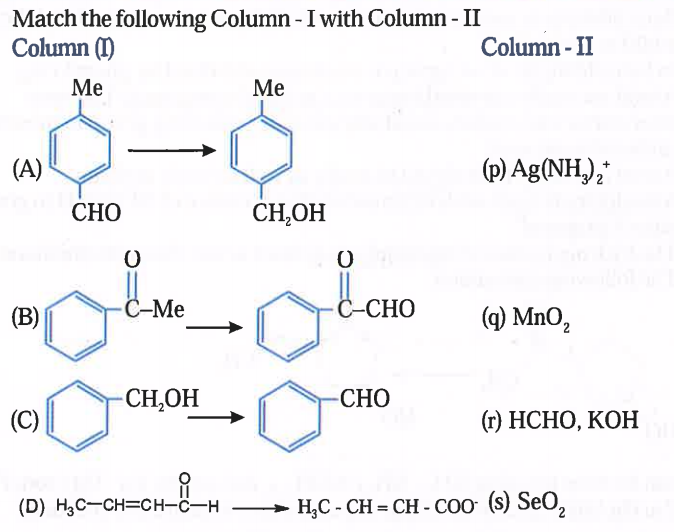 Aa(I,ii), b(iii,iv)Ba(I,iv), b(ii,iii)Ca(iii,iv), b(i,ii)Da(i,iii), b(ii,iv)
Aa(I,ii), b(iii,iv)Ba(I,iv), b(ii,iii)Ca(iii,iv), b(i,ii)Da(i,iii), b(ii,iv)
Match the following column I and Column II
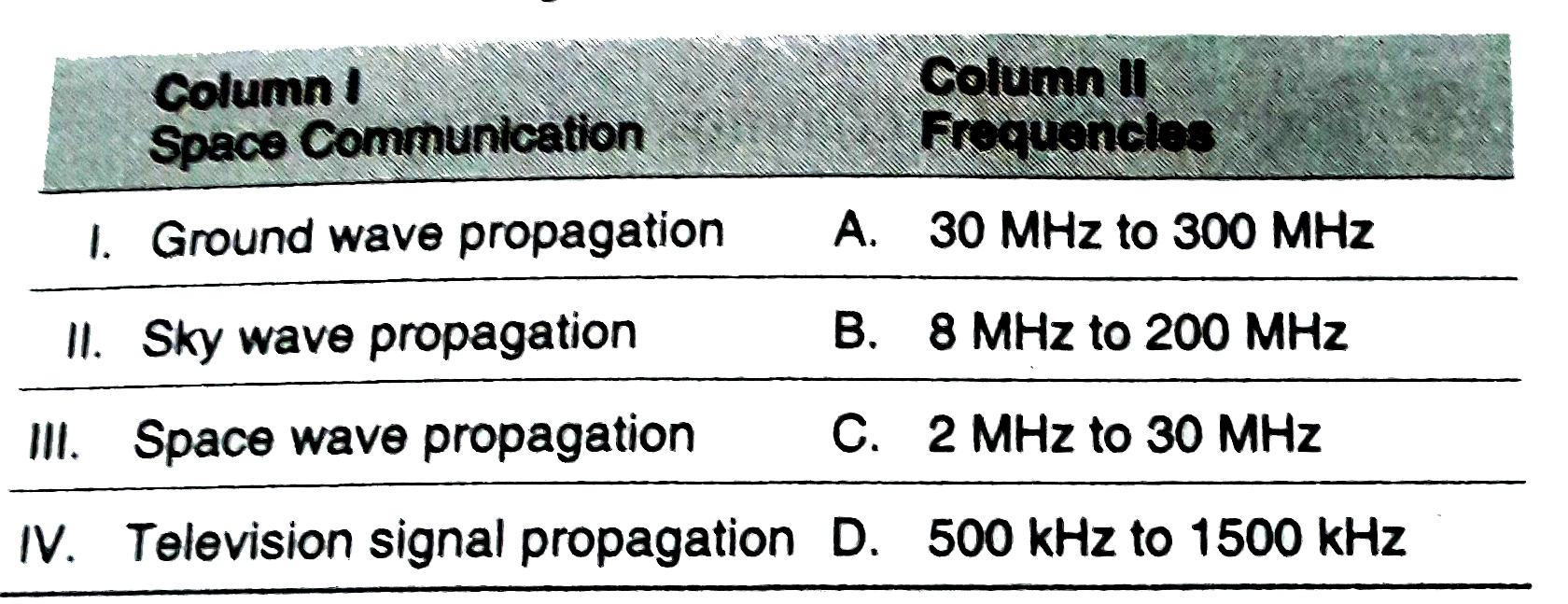 View Solution
View SolutionMatch the following columns I with column II.
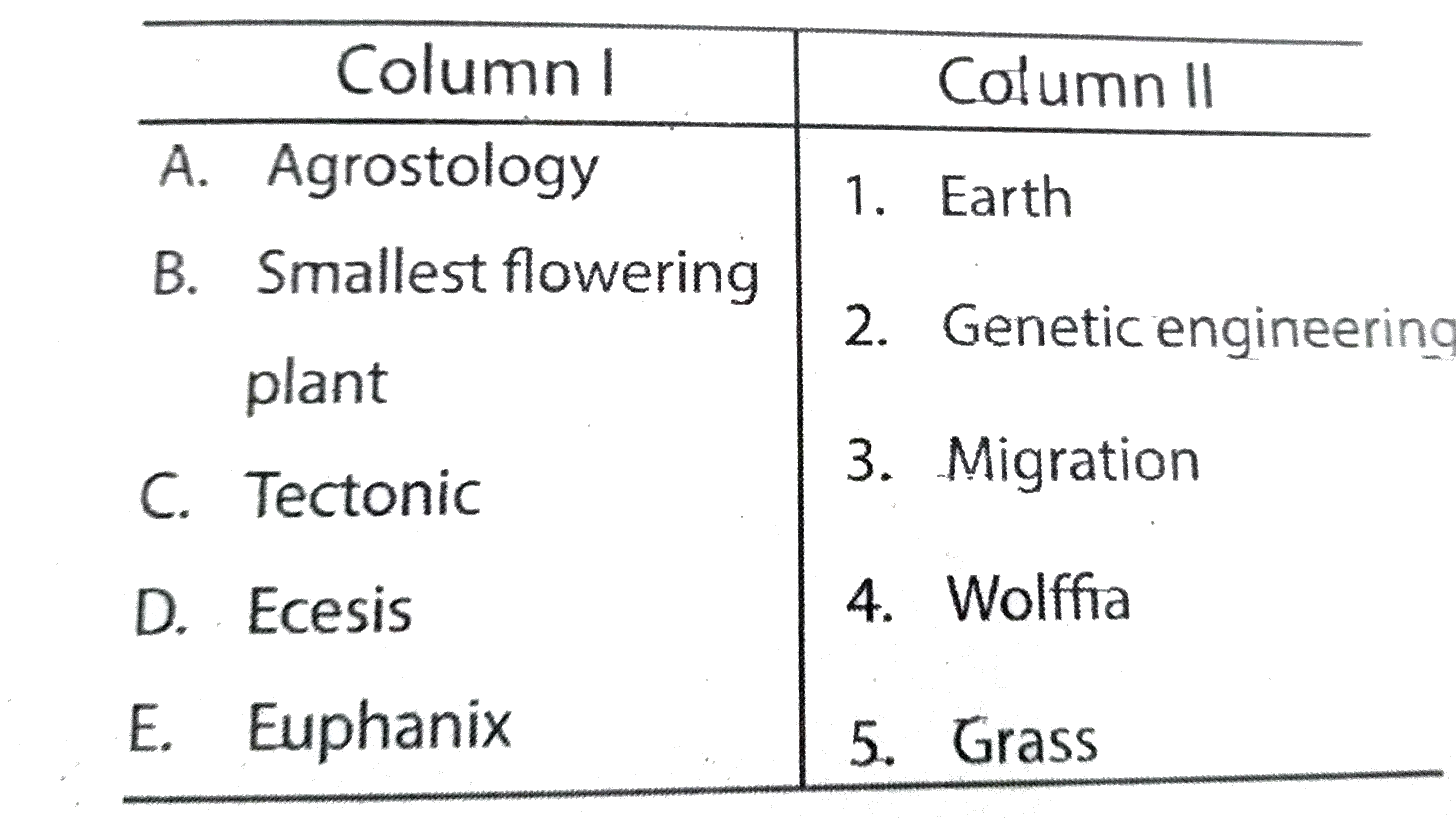 View Solution
View SolutionMatch the following (column-I with column-II)
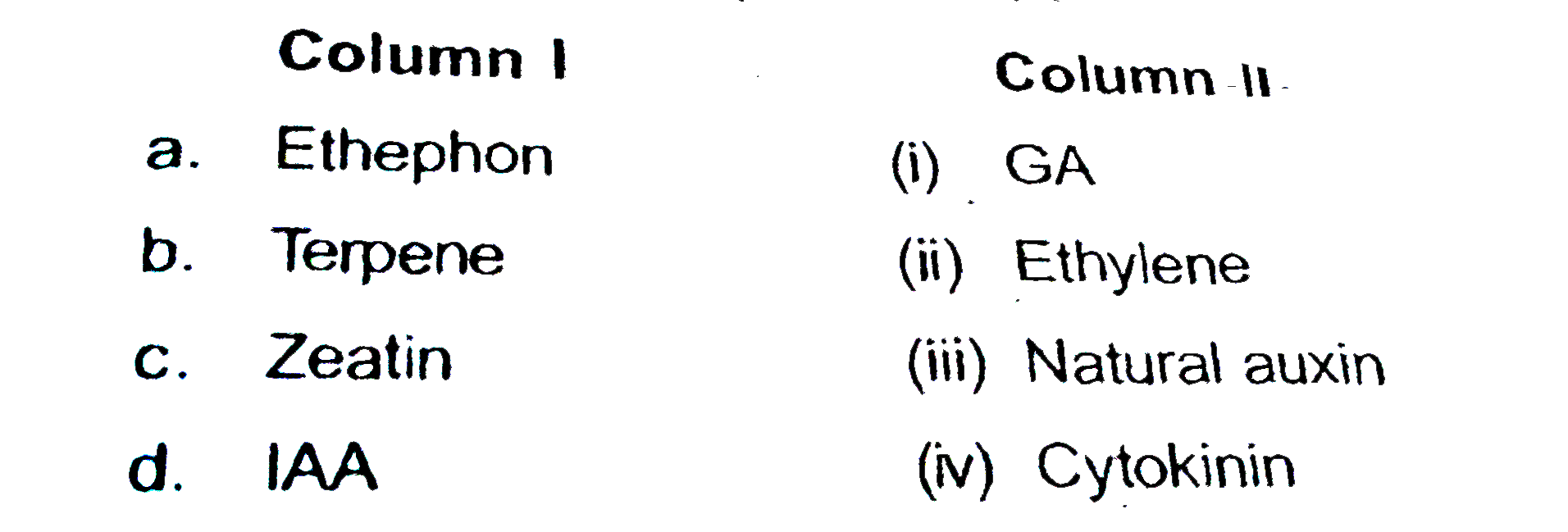 View Solution
View SolutionMatch the following (column-I with column-II)
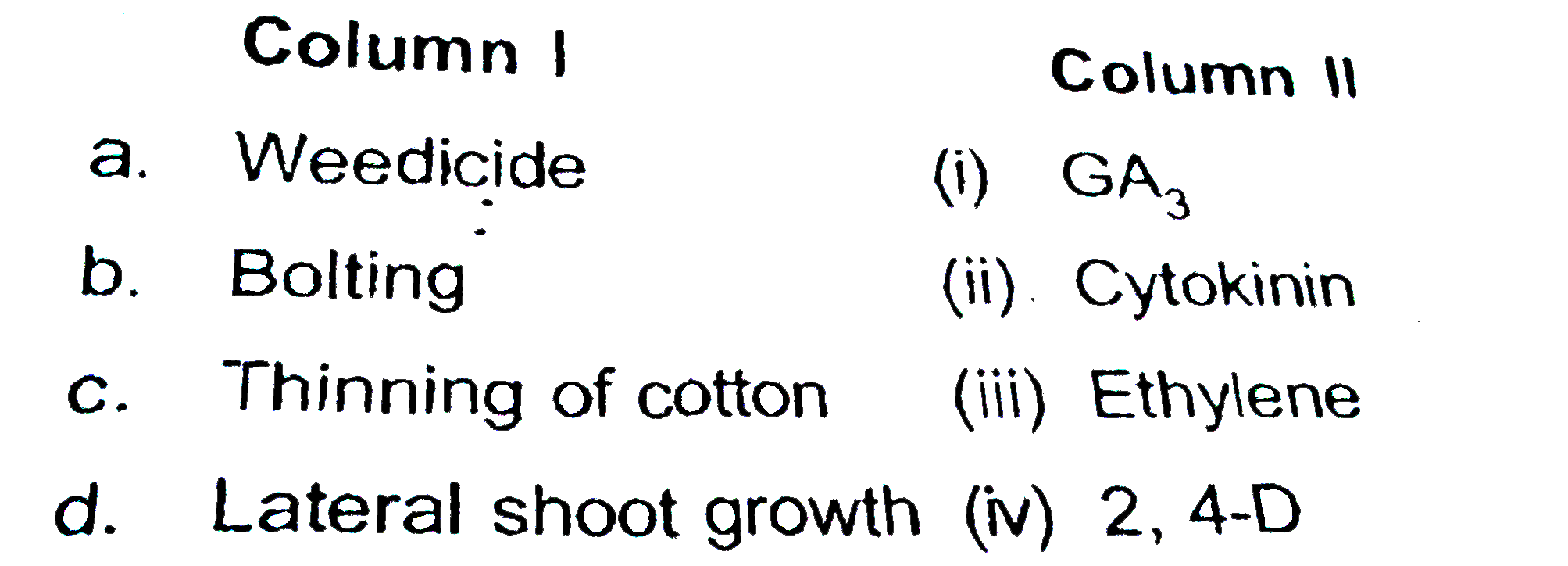 View Solution
View SolutionMatch the following (column-I with column-II)
 View Solution
View SolutionMatch the following Column-I and Column-II :-
 View Solution
View Solution


